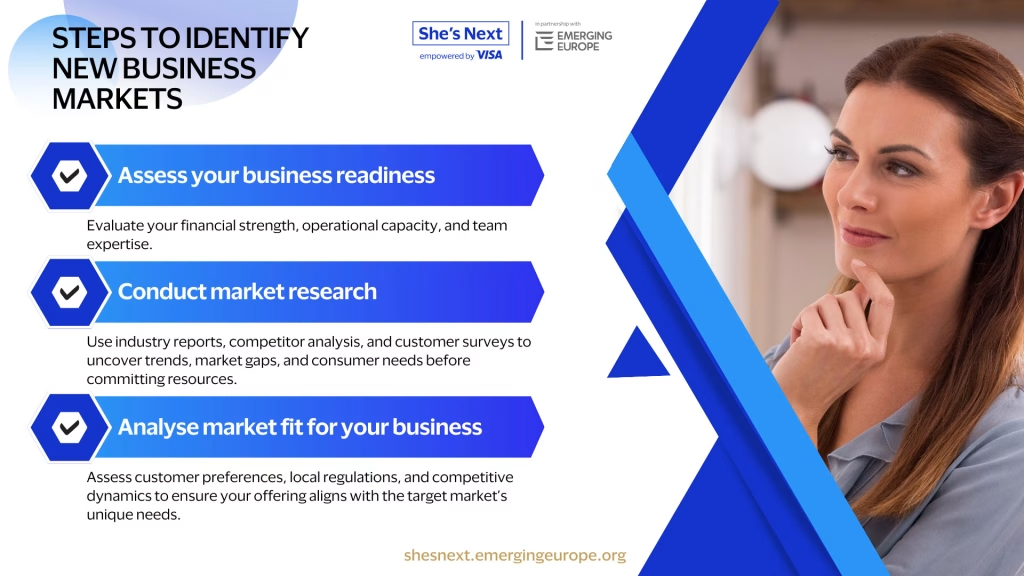
How to Identify New Markets for Your Business (Part 1) – Laying the Foundation
Expanding into a new market isn’t just about increasing sales—it’s about smart, sustainable growth. A well-executed expansion allows businesses to diversify revenue streams, reduce dependency on a single market, and position themselves for long-term success.
But scaling internationally comes with challenges. Understanding where to expand, whether your business is ready, and how to navigate unfamiliar markets can make or break your success.
This guide walks you through the three essential steps to identifying new markets: assessing your readiness, conducting research, and ensuring market fit.
Assess your business readiness
Expansion isn’t about chasing opportunities—it’s about knowing you’re ready to seize them.
Before entering a new market, evaluate whether your business has the financial, operational, and strategic capacity to grow.
Key questions to ask:
Financial health – Can you sustain expansion costs (marketing, logistics, compliance) without straining existing operations?
Operational capacity – Can you meet increased demand without compromising quality or efficiency?
Talent and expertise – Do you have the right people in place, or will you need local hires?
Scalability – Can your supply chain support growth in a new region?
Example: A Serbian IT services company looking to enter the US market realised its pricing model needed adjustment to stay competitive. Instead of launching nationwide, it focused on mid-sized clients in tech hubs like Austin and Boston.
If any of these areas are weak, it might be worth strengthening your foundation before taking the leap.
Conduct market research
Gut feeling won’t cut it—data-driven decisions will.
Market research helps you understand customer demand, industry trends, and potential roadblocks before you invest.

Where to gather insights:
Industry reports and trade data – Government export statistics, reports from sources like McKinsey and the World Bank.
Competitor analysis – Study similar companies entering your target market. Where are they succeeding? Where are the gaps?
Customer research – Conduct surveys, engage in online forums, and analyse consumer behaviour.
Example: A Ukrainian SaaS company exploring Canada used LinkedIn polls and targeted Facebook ads to gauge interest in its services before committing resources. The insights helped refine its positioning and pricing strategy.
Analyse market fit for your product or service
Not every promising market is a good fit. Even if demand exists, cultural, regulatory, and competitive factors can impact success.
How to evaluate market fit:
Customer preferences – Does your product need adaptation to fit local expectations?
Regulatory landscape – Are there compliance hurdles that could slow down market entry?
Competitive environment – Can you differentiate your offering effectively?
Example: A Kazakh fashion brand entering Germany discovered that sustainable sourcing was a key purchasing factor. It repositioned its messaging around ethical production, aligning with market expectations.
The right market expansion starts with readiness, research, and fit. Get these steps right, and you’ll lay a strong foundation for growth.
Start by auditing your business readiness—identify your strengths, gaps, and areas for improvement before expanding.
Next up: Learn how to validate demand, navigate regulations, and choose the right market entry strategy in Part 2.
New Free Courses — Made for Ambitious Women Entrepreneurs!
It’s time to grow smarter, adapt faster, and take your business global.
Explore two powerful courses available exclusively to She’s Next members:
The Reinvention Masterclass for Start-up Founders
Beyond Borders: Building for Global Success
Enroll today — it’s free!





